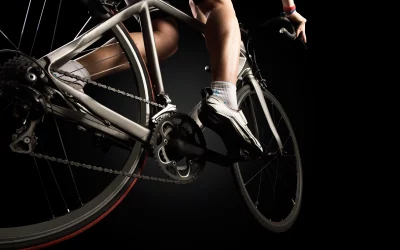VICARIOUS LIABILITY IN UTAH
In Latin, respondeat superior means “let the superior make answer.” In legal terminology, respondeat superior—otherwise known as “vicarious liability”—is the doctrine in which an employer or principle is held liable for their employees’ or agents’ wrongful acts committed within the scope of employment.
In general, under the doctrine of respondeat superior, “an employer may be held vicariously liable for the acts of its employee if the employee is in the course and scope of his employment at the time of the act giving rise to the injury.”
COURSE AND SCOPE OF EMPLOYMENT AND THE “COMING AND GOING RULE”
“The major premise of the ‘going and coming’ rule is that it is unfair to impose unlimited liability on an employer for conduct of its employees over which it has no control and from which it derives no benefit.”
To determine whether an employee is in the course and scope of his employment, Utah courts apply a three-part test, as follows:
- An employee’s conduct must be of the general kind the employee is employed to perform.
- The employee’s conduct must occur within the hours of the employee’s work and the ordinary spatial boundaries of the employment.
- The employee’s conduct must be motivated, at least in part, by the purpose of serving the employer’s interest.
In applying the Birkner test, the Utah Court of Appeals has stated that “an employee who fails to meet any one of these three factors is outside the scope of employment and the employer cannot be held liable under the doctrine of respondeat superior”” Christensen v. Burns, 844 P.2d 992, 994 (Utah App. 1992) reversed on other grounds Christensen v. Swenson, 874 P.2d 125 (Utah 1994).
Under the first prong of the Birkner test, an employee’s conduct must be of a general kind the employee is employed to perform. “In other words, the employee must be about the employer’s business and the duties assigned by the employer.” Birkner, 111 P.2d at 1056-57.
In order to satisfy the second prong of Birkner, the employee’s conduct must have occurred during the hours of her employment. Birkner, 111 P.2d at 1057.
As to the third prong of the Birkner test, in Whitehead v. Variable Annuity Life Insurance Co., 801 P.2d 934, 937 (Utah 1989), the Utah Court of Appeal Court found that the employer “had no control over [the employee’s] decision to commute to and from work, the route he chose, or the manner in which he drove his automobile.” The Whitehead Court found that a “useful test [regarding the scope of employment] is whether the trip is one which would have required the employer to send another employee over the same route or to perform the same function if the trip had not been made.” Whitehead, 801 P.2d at 937.
The “coming and going” rule ” arose under worker’s compensation law because, ‘in most instances, such an injury is suffered as a consequence of risks and hazards to which all members of the traveling public are subject rather than risks and hazards having to do with and originating in the work or business of the employer.'” Drake v. Industrial Commission, 939 P.2d 177, 182 (Utah 1997). “[W]hen the employee engages in a special activity which is within the course of employment, and which is reasonably at the request or invitation of the employer, any injury suffered while traveling to and from the place of such activity is also within the course and scope of employment.” Drake, 939P.2d l83.
Utah Courts have generally held that “an employee is not in the scope of his employment for purposes of third-party negligence claims when he is traveling to and from work.” Whitehead v. Variable Annuity Life Ins. Co., 801 P.2d 934, 935 (Utah 1989).
If “an agent’s act occurs within ‘an independent course of conduct’ not connected to the principal,” the principal is not liable for the agent’s tort. M.J. v. Wisan, 371 P.3d 21, 30 (Utah 2016). Courts have adopted this rule because “it is inherently unfair to penalize an employer by impos[ing] unlimited liability … for [the] conduct of its employees over which it has no control and from which it derives no benefit.” Id. at 937.
The Utah Court of Appeals has stated that when applying the “coming and going” rule to negligence cases, “it is fundamental that even though the employee may not be at a regular place of work, he must be performing a duty for his employer, or one which is so connected with his employment as to be an essential part thereof ” Lundberg v. Cream O’Weber, 465 P.2d at 176 (Utah App. 1992).
EXCEPTIONS TO “COMING AND GOING RULE”
- “Owner-Required/Provided Transportation” Exception.
One of the main exceptions to the coming and going rule is an exception for situations in which the employer provides the transportation for the employee referred to as the “employer-provided transportation” exception. VanLeeuwen v. Indus. Comm’n of Utah, 901 P.2d 281, 284 (Utah Ct.App.1995). Relevant factors that courts consider when applying this exception include control and benefit to the employer. Where an employee engages in conduct benefitting or controlled by the employer, the benefit and control can be weighed against the nature of the trip in order to determine the liability of the employer. Ahlstrom v. Salt Lake City Corp., 2003 UT 4, ¶ 9, 73 P.3d 315. Employer liability, however, is not implicated when the employee simply has a choice of vehicles, exercises the option to use the employer’s vehicle. Ahlstrom, 2003 UT at ¶ 17.
The Utah appellate court states, “the going and coming rule does not apply ‘where transportation was furnished by the employer . . .'” State Tax Commission v. Industrial Commission, 685 P.2d 1051, 1053 (Utah 1984). (Note: This may be a “special errand” case. See Cross v. Board of Review of the Industrial Commission, 824 P.2d 1202, 1205 (Utah App. 1992). Scope of employment may be found “where the employer requires the employee to use a vehicle as an instrumentality of the business.” State Tax Commission, 685 P.2d at 1053.
- “Special Errand” Exception.
In a 2018 published decision, the Utah Court of Appeals considered a workers’ compensation appeal which raised issues related to the “special errand” exception. Davis v. Labor Commission, Air Systems, 2018 UT App 71. The Court upheld the Labor Commission’s ruling that no exception to the coming and going rule applied in the instant case. There simply was not a strong enough showing that the employer exercised a degree of control or received a benefit from the employee’s use of the vehicle to take the case out of the general rule that an accident during a commute does not occur in the course and scope of one’s employment.
MISCELLANEOUS RELEVANT UTAH CASES
Utah case law recognizes that that “[s]cope of employment issues are in general highly fact-dependent. Indeed, our prior case law ‘whether or not the injury arises out of or within the scope of employment depends upon the particular facts of each case.'” Drake v. Industrial Commission of Utah, 939 P.2d 177, 182 (Utah 1977) citing State Tax Commission v. Industrial Commission of Utah, 685 P.2d 1051, 1053 (Utah 1984).
Contact our team at Gosdis Law for any more questions regarding vicarious liability in Utah or any other personal injury questions. Call us at 385-429-9960 or send us a text at 801-200-1578.




